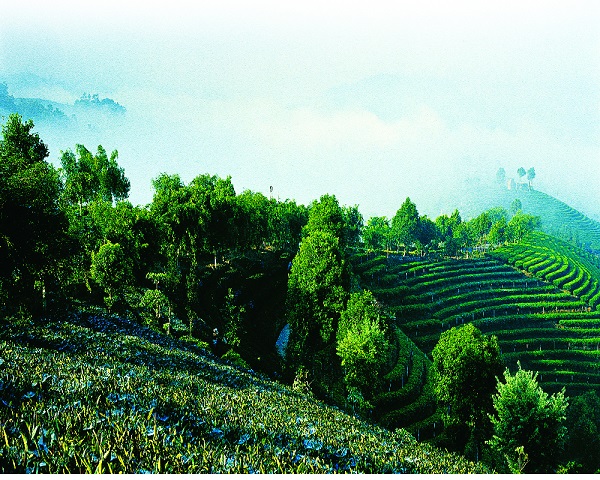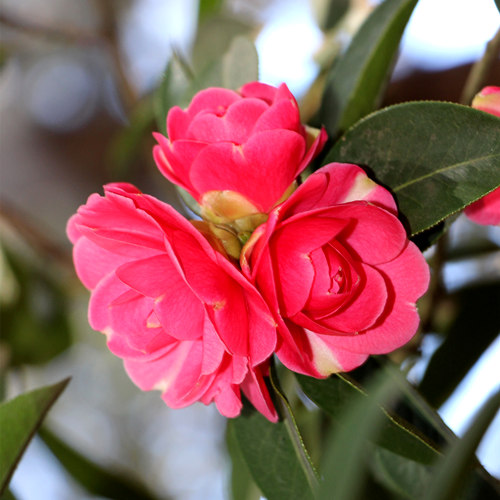
Tea Primogenitor Cultural Journey

Tea Primogenitor in Yunnan
Global tea culture origins from China, Shennong is honored as the very first primogenitor of tea. However, instead of Shennong, Kongming(Known as Zhuge Liang among Chinese)is regarded as the tea primogenitor in Yunnan. Historical stories tell that when Kongming led his army to Yunnan, most soldiers were sick due to the poisoning local mist, then Kongming dreamed of an elderly in white and was told that tea would help curing the soldiers. Tea actually worked and brought the army victory. Kongming decided to plant tea in Yunnan in memory of that elderly in white and also to develop local agriculture.
In the ancient tea plantation section of Yunnan remain Kongming Mt.and Kongming Tea. Natives hold the tea primogenitor ceremony every year to celebrate the birthday of Kongming on 23rd of the 7th lunar month.
Besides Kongming, some ethnic groups in Yunnan tea producing area also worship ancient tea trees or local Guardians of mountains. Bulang villages worship their ancestor Pa Aileng, who had been considered to be the first Bulong people planted tea.
Ring Route of Tea Culture (Recommended Route)
15 Days Journey
Kunming-(5.2h/385km)-Ning’er-(0.8h/46km)-Pu’er-(4h/203km)-Yiwu-(4h/162km)-Menghai-(2.5h/113km)-Langcang-(2.6h/102km)-Ximeng-(5.3h/218km)-Shuangjiang-(3.7h/192km)-Fengqing-(7.5h/285km)-Zhenyuan-(5.5h/125km)-Jinggu-(3.5h/213km)-Mojiang-(3.7h/267km)-Kunming
7 Days Journey
Route A:
Kunming-(5.2h/385km)-Ning’er-(0.8h/46km)-Pu’er-(2.6h/136km)-Jinggu-(5.3h/279km)-Fengqing-(7.3h/285km)-Zhenyuan-(6.2h/450km)-Kunming
Route B:
Kunming-(5.2h/385km)-Ning’er-(0.8h/46km)-Pu’er-(4h/203km)-Yiwu-(4h/162km)-Menghai-(2.5h/113km)-Langcang-(2.6h/102km)-Ximeng-(11.2h/689km)-Kunming
3 Days Journey
Kunming-(5.2h/385km)-Ning’er-(0.8h/46km)-Pu’er-(5.8h/418km)-Kunming
Trip to Tea Mountains(Recommended Scenic Spots)
Pu’er

Jingmai Mangjing Ancient Tea Plantation of Ten Thousand Acres
The plantation projects locates in Huimin Town, Langcang County of Pu’er. It’s the best protected and largest remaining artificial cultivation tea plantation all over the world, honored as the Natural Tea Museum as a historical witness of the development of Chinese tea culture. The plantation is considered as an important display of tea cultural tourism in Langcang, and it’s listed as the first batch of “Chinese Folk Cultural Heritage Tourism Demonstration Area”.
Over 20km to Huimin Town which is 47km away from Langcang County.

Qianjiazhai Wild Ancient Tea Tree Groups
Wild tea tree groups in Zhenyuan County seat Located at latitude 24 degrees 7 minutes,east longitude 101 degrees 14minutes, with an altitude of 2100~2500m, covering an area of 28747.5 acres among the primeval forest in Ailao Mt. National Nature Reserve which is the largest and best protected subtropical wet broad-leaved forest.
King of wild tea trees is 25.6m tall and its diameter at breast is 0.89m, known as #1 Shangba. According to experts’ opinion, this tree is over 2700 years old, it’s the oldest wild tea tree known so far thus it’s called the King of wild tea trees, won the Guinness World Records in 2001.

Kunlushan Mt. Royal Ancient Tea Plantation
Kunlushan Mt. was once the royal tribute tea producing area, the picking and making processes of tribute tea are supervised by troops. Almost all kinds of wild tea trees distribute within the virgin forest covering 10122 acres. Kulunshan Mt. is also the nearest tea plantation to Kunming with the most convenient traffic conditions.

Yingpanshan Mt. Tea Plantation
Yingpanshan Mt. obtains the nearest tea plantation to Pu’er city. The distribution of tea covers an area of 23 thousand acres, tea plantation goes ups and downs along with the mountains. On the highest peak of Yingpanshan Mt. seats Wenchalou Tower, and the only Pu’er Tea theme park in China, known as China Tea Expo Garden. Tourists could take park in the making process of Pu’er Tea, or learn more about tea culture and try a cup of refreshing fragrant tea.
Xishuangbanna

Bada Tea Plantation in Menghai
Speaking of Bada, the Bulang people consider it as “where the immortals left footprints” in their language. It’s a famous place among tea fans in China and abroad. In 1962, Yunnan Institution of Tea found an ancient wild tea tree over 1700 year old in virgin forest beside Hesong Village in Bada, experts and tea fans hand been visiting this place almost every year since then. Bada obtains most of wild tea trees in Xishuangbanna, the original tea trees grow in an area over 6000 acres. There are also large artificial cultivation tea



